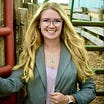Local Environmental Advisory Committee outlines path to carbon neutrality
Committee members highlighted the past, present and future of Laramie’s long-term goal to hit carbon neutrality by 2050.
Members of the Alliance for Renewable Energy presented on the topic of Laramie’s journey to carbon neutrality and recommended next steps during a Laramie City Council work session last week.
The presentation was developed by the Laramie/Albany County Environmental Advisory Committee and shared that group’s recommendations to achieve carbon neutrality.
Laramie plans to be carbon neutral by 2050, being the first municipality in the state of Wyoming to set such a goal.
It started in October 2018 with community members that showed interest in renewable energy diversification for the city, the presenters said.
In 2019, the Haub School developed Laramie’s baseline emissions inventory calculator, which was later finalized by intern Xanthe Yorke.
In 2020, the Haub School made a community-wide emissions inventory in partnership with Local Governments for Sustainability, a group which Laramie later joined.
Concurrently, Laramie used Blue Sky Grants from Rocky Mountain Power to install solar panels at the Laramie Recreation Center, and more solar panels as well as an electric vehicle charger at Laramie Fire Station 3.
In 2021, the city formed the Laramie Climate Action Planning Taskforce alongside the county government, the University of Wyoming and the Alliance for Renewable Energy.
One of last week’s presenters, MaryGrace Bedwell, highlighted the taskforce’s operational, community/citizen and key support recommendations for Laramie’s carbon neutrality push going forward.
“We recommend pursuing large-scale solar, using bulk buys and a community-based approach,” Bedwell said. “We also propose to hybridize or electrify our fleets across these three entities (city, county and university) as well as pursuing a unified compost stream. We envision starting on a larger scale, with commercial and businesses and then moving towards residential composting.”
Bedwell also asked the city to take a closer look at the city’s transportation system, with an eye to building more sustainable walking and biking infrastructure.
The presenters recommended developing a system for energy audits for homes, public spaces and commercial buildings and developing a loan program.
“Add loan program(s) to help fund efficiency improvements and weatherization efforts, particularly ones that support equity for low-income community members,” the recommendations state.
Bedwell said the city should also host community engagement workshops and conduct annual emissions inventories to stay engaged with its carbon neutrality goals.




